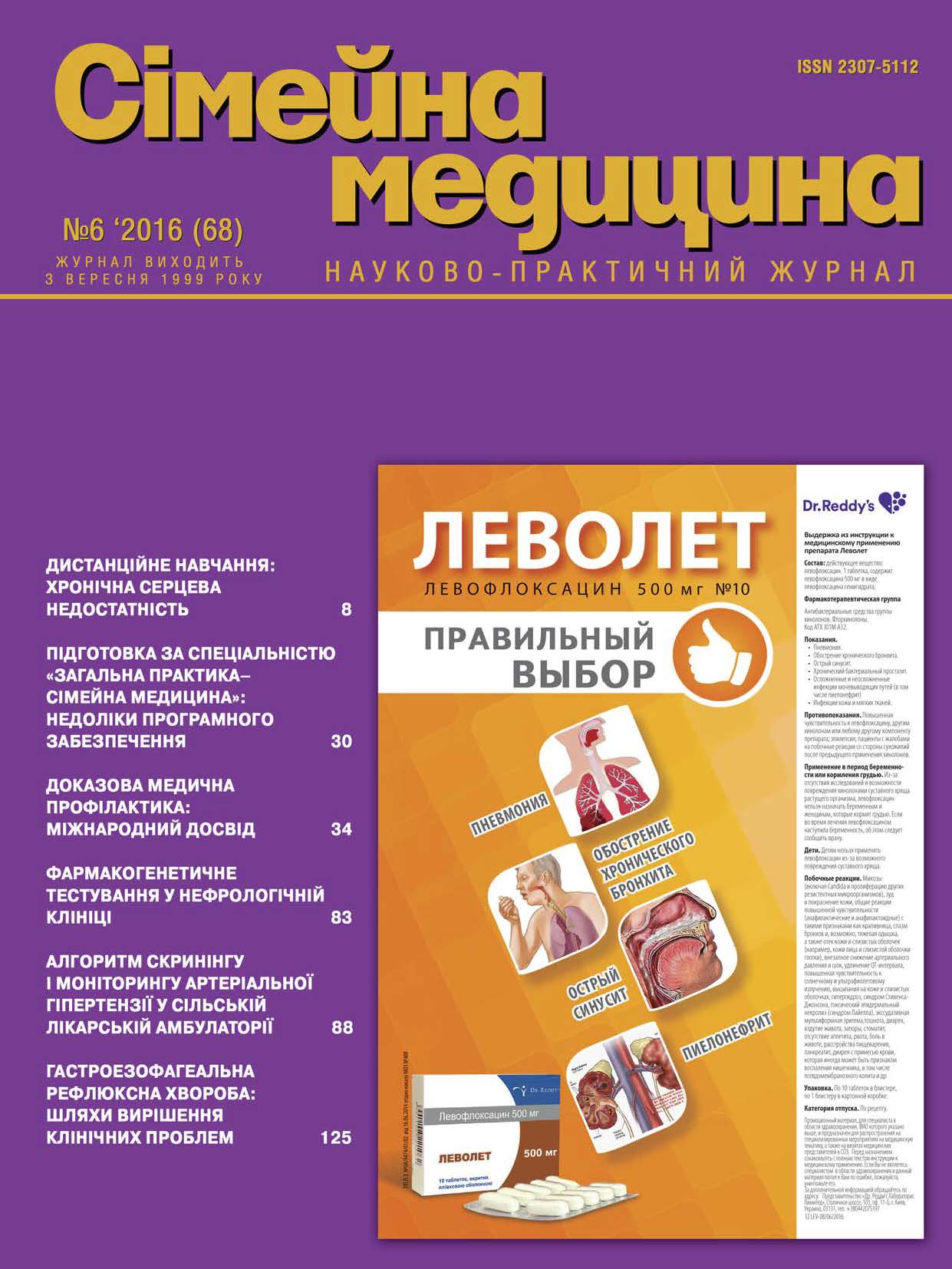GERD: Clinical Solutions of Problems in General Practice
##plugins.themes.bootstrap3.article.main##
Abstract
The objective: To explore the features of acid level and aggravation in stomach and esophagus in patients with isolated GERD, hypertension and their comorbidity.
Patients and methods. For this study were selected 4 groups: group of patients with GERD, a group of patients with hypertension, the group of patients with comorbid hypertension and GERD and group without GERD and hypertension (total 78 patients). To all patients were performed 3-channel gastro esophageal pH monitoring. In our case, we conducted a 3-hour version of the survey with standardized provoking breakfast. All patients underwent assessment of gastric secretion by original integrative indicators that reflect basal pH, number of different types of refluxes, duration of alkalization in stomach after meal.
Results. GERD patients with hypertension and without are demonstrating an equal number of acid and all (nonacid + acid) reflux which is 18,9 against 19,8 (p>0,05). But the difference between the two groups was that in patients with concomitant hypertension observed longer refluxes 309,3 to 179,1 (p<0,05) and a total acid exposure tends to be prolonged – 25,9 to 20,9 (p>0,05).
Our analysis of the state of gastric secretion on the results of 2001 minute intra gastric pH monitoring, showed as expected more intensive acid in both groups of patients with GERD. The most «acidic» patients were GERD patients with hypertension, but compared with similar patients without hypertension, the difference was false due to the relatively small size of the samples.
Conclusion. Comorbidity of GERD and hypertension is characterized by severe pathological dysmotility in the lower third of the esophagus, unlike isolated GERD, which affects the increase in acid exposure and susceptibility to long reflux. A factor that may add to burden of GERD in combination with hypertension may be gastric hyperacidity and a clear predisposition to obesity.
##plugins.themes.bootstrap3.article.details##

This work is licensed under a Creative Commons Attribution 4.0 International License.
Authors retain the copyright and grant the journal the first publication of original scientific articles under the Creative Commons Attribution 4.0 International License, which allows others to distribute work with acknowledgment of authorship and first publication in this journal.
References
Вдовиченко В.І., Острогляд А.В., Курченко Л.М. Поширеність гастроезофагеальної рефлюксної хвороби у хворих на ішемічну хворобу серця та артеріальну гіпертензію // Укр. терап. журн. – № 2. – С. 35-38.
Головской Б.В., Ховаева Я.Б. Периферические вегетативные синдромы при гастроэнтерологических заболеваниях // Гастробюллетень. – 2000. – № 1–2, прил. 1. – С. 19.
Мелащенко С.Г., Кузенко Ю.Г. Спосіб діагностики ГЕРХ. Патент № 2014 00749 від 27.01.2014 р.
Мелащенко С.Г., Єрмілова Г.В., Ткачук Т.М., Низькошапка С.М. Спосіб діагностики атрофічного та гіперсекреторного гастритів. Патент UA 80751U від 10.06.2013 р.
Трухманов А.С., Кайбышева В.О. рН-импедансометрия пищевода. Пособие для врачей // Под ред. акад. РАМН, проф. В.Т. Ивашкина. – М.: ИД «МЕДПРАКТИКА;М». – 2013. – C. 32.
Чернобровий В.М., Колісник С.П., Заїка С.В. Спосіб експрес-діагностики та контролю лікування гастроезофагеальної рефлюксної хвороби. Пат. № 13105 від 15.03.2006, Бюл. № 3, 2006 р.
Chen C.L., Orr W.C. et al. Cardiac autonomic regulation differentiates reflux disease with and without erosive esophagitis // Scand. J. Gastroenterol. – 2006. – V. 41(N9). – P. 1001-1006.
de Leone A., Tonini M., Dominici P., Grossi E., Pace F. The proton pump inhibitor test for gastroesophageal reflux disease: Optimal cut-off value and duration // Dig. Liver. Dis. – 2010. – V. 42, № 11. – P. 785-790.
Dent J., El-Serag H.B., Wallander M.A., Johansson S. Epidemiology of gastroesophageal reflux disease: A systematic review // Gut. – 2005. – Vol. 54. – P. 710-717.
Lee K.J., Kim J.H., Cho S.W. Prevalence of ineffective esophageal motility and its relevance to symptoms and esophageal acid exposure in korean patients referred for foregut symptoms // Digestion. – 2006. – V. 73 (№ 2–3). – P. 171-177.
Mancia G, Grassi G. The Autonomic Nervous System and Hypertension // Circ Res. – 2014. – V. 114. – P. 1804-1814.
Nandunkar S., Talley N.J. Epidemiology and natural history of reflux disease // Baillieres best Pract. Res. Clin. Gastroenterol. – 2006. – Vol. 5. – P. 743-757.





